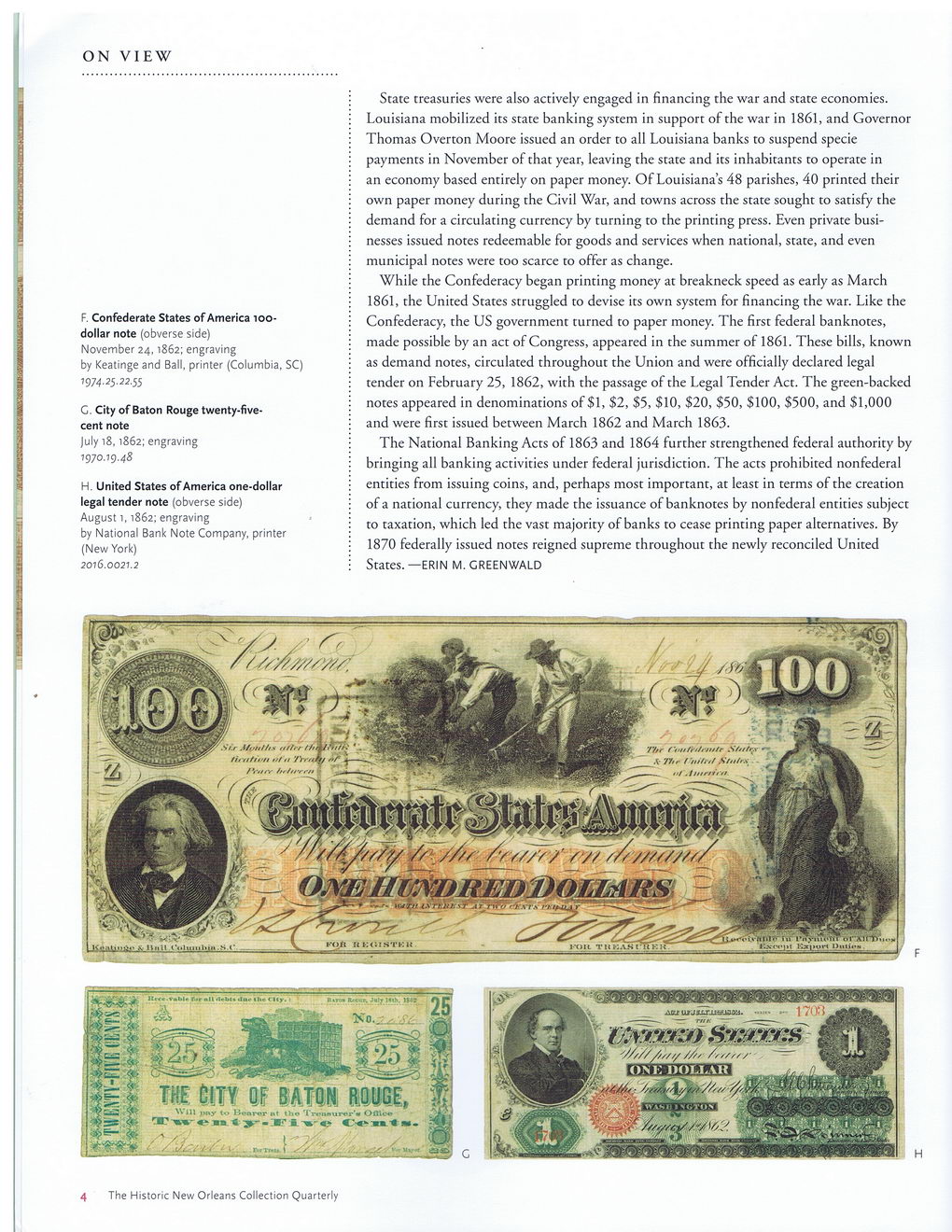This text was obtained via automated optical character recognition.
It has not been edited and may therefore contain several errors.
ON VIEW F. Confederate States of America 100-dollar note (obverse side) November 24,1862; engraving by Keatinge and Ball, printer (Columbia, SC) 1974.25.22.55 C. City of Baton Rouge twenty-five-cent note July 18, 1862; engraving 1970.19.48 H. United States of America one-dollar legal tender note (obverse side) August i, 1862; engraving by National Bank Note Company, printer (New York) 2016.0021.2 State treasuries were also actively engaged in financing the war and state economies. Louisiana mobilized its state banking system in support of the war in 1861, and Governor Thomas Overton Moore issued an order to all Louisiana banks to suspend specie payments in November of that year, leaving the state and its inhabitants to operate in an economy based entirely on paper money. Of Louisiana’s 48 parishes, 40 printed their own paper money during the Civil War, and towns across the state sought to satisfy the demand for a circulating currency by turning to the printing press. Even private businesses issued notes redeemable for goods and services when national, state, and even municipal notes were too scarce to offer as change. While the Confederacy began printing money at breakneck speed as early as March 1861, the United States struggled to devise its own system for financing the war. Like the Confederacy, the US government turned to paper money. The first federal banknotes, made possible by an act of Congress, appeared in the summer of 1861. These bills, known as demand notes, circulated throughout the Union and were officially declared legal tender on February 25, 1862, with the passage of the Legal Tender Act. The green-backed notes appeared in denominations of $1, $2, $5, $10, $20, $50, $100, $500, and $1,000 and were first issued between March 1862 and March 1863. The National Banking Acts of 1863 and 1864 further strengthened federal authority by bringing all banking activities under federal jurisdiction. The acts prohibited nonfederal entities from issuing coins, and, perhaps most important, at least in terms of the creation of a national currency, they made the issuance of banknotes by nonfederal entities subject to taxation, which led the vast majority of banks to cease printing paper alternatives. By 1870 federally issued notes reigned supreme throughout the newly reconciled United States. —ERIN M. GREENWALD F 4 The Historic New Orleans Collection Quarterly

New Orleans Quarterly 2016 Summer (005)